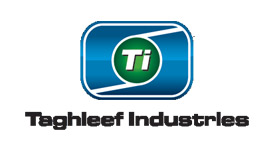“Insanity: The definition of insanity is doing the same thing over and over again and expecting different results.”
– Albert Einstein
Breaking the insanity cycle
Jim Burger, Ti’s Director of Information Systems, first deployed Microsoft Project Server because of its reputation and robust feature set. Soon Burger realized that MS Project Server’s traditional command-and-control style project management wasn’t working for the company. Having one project manager assign all activities and tasks — with set-in-stone due dates — didn’t account for daily project changes, thwarted collaborations and most importantly, didn’t align with their workplace culture.
Additionally, the scope of their implementation was such an administrative burden that it took a full-time certified project manager just to manage the work environment – before even starting any actual project management! “For every 10 changes we’d make, we’d have one mess-up that would corrupt the project plan,” says Burger. This lead to a “just don’t touch it” attitude.
What Burger and his group really needed was a new project management solution that could accept change, estimate timelines, help plan tasks at a very detailed level, increase team collaboration, and still be flexible enough to accommodate a unique workplace culture with a variety of work styles and approaches.
Why LiquidPlanner fit the bill
Burger chose LiquidPlanner because of its ease of use, dynamic scheduling, and for the social and collaborative environment. More importantly, he was sold on how LiquidPlanner eschews traditional command-and-control methodologies for a “bottom-up” approach: one where team members build their own task lists and can make and access comments in a Facebook-like conversation stream.
Historically, for folks working on large projects, it was easy to put the blinders on and just focus on their workload. Using LiquidPlanner was a different – and broader – story.
“For folks on the ground doing the work, particularly on large projects, it was easy to put the blinders on, says Burger. “Now, with LiquidPlanner features like Commenting, a transparent collaboration platform and a central project location they can see they’re part of something bigger. As a project manager, I’m managing commentary. Commentary becomes the energy that drives this!”
The beauty of ranged estimations based on effort
Another important factor for Burger was seeing how LiquidPlanner uses ranged estimation based on work effort, and how the scheduling engine can track the actual time a worker spends completing a task and then calculate the probability of individual tasks and projects being completed by certain dates.
This “reality-based approach,” as Burger describes it, allows managers to better set daily priorities and compare estimates to get an accurate picture of progress. By being able to analyze a project from all levels, they can accurately assess what does and doesn’t work. Mistakes are no longer repeated.
“The ranged estimates are more in line with how people think and help take some of the stress out of estimating,” says Burger. And it’s impossible to overload resources in LiquidPlanner, so no team member is ever booked for more than 100 percent of their time.
It also means Burger doesn’t have to dictate the same method for every task, another departure from the command-and-control style of traditional project management.
As an added bonus, using LiquidPlanner did not require much, if any, formal project management training – a huge factor in the rapid adoption of Ti’s LiquidPlanner user group, which grew from 10 to 40 in just a few months.
Finally, says Burger, “We didn’t anticipate the impact and the value that the collaboration driven by LiquidPlanner would foster. We knew it was necessary for project managers to have visibility, but this deeper, cross-team visibility has helped us be much more effective as a project team.”


